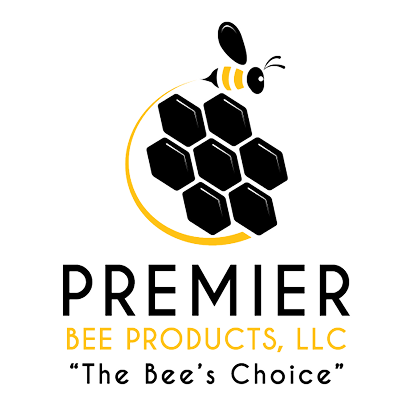The Reason You Need to Rotate Your Foundation
Not long ago, beekeepers believed that old, dark comb was something to be proud of.
The aged comb was a sign of experience among the beekeeper, to be sure. But the hardened comb also provided enhanced durability when extracting supers.
As it (usually) turns out, there is more to the story.
In this blog, we dig through research from the academic community to discover the correlation between the age of honeycomb and the health of a colony.
Whether you run a commercial operation or enjoy beekeeping as a hobby, the health of your colonies is paramount.
Incorporating a steady rotation of your foundation will help provide just that.
The Chemical Makeup of Beeswax
Without delving too deep, it’s important to have a basic understanding of the chemical nature of beeswax.
“Beeswax is known to be an environmental sponge,” explains Premier Bee Founder, Jeff Johnson.
“This wax is made up predominantly of a class of organic molecules called esters. These esters tend to absorb everything they come into contact with — whether physical particles or compounds in the air.”
Let’s put it another way.
We know how poorly oil and water mix. That instance is the same chemical mechanism occurring between beeswax and honey.
Both beeswax and oil fall under the umbrella of a lipid, which is another class of organic molecules with a similar chemical makeup.
Honey — on the other hand — is mostly composed of water and sugars (nectar is composed of 80% water).[1]
What does this chemistry mean for my bees?
When bees are out foraging in the environment, they track in all sorts of ag chemicals. These chemicals (or, shall we say, “toxins”) are attracted to the beeswax, where they settle permanently.
“When you look at old wax that’s been in a hive for three or more years, it is dark and cruddy-looking,” describes Johnson. “That’s because it has been absorbing all of those harmful toxins for years.”
The fact that honey and beeswax are fundamentally different in their chemical makeup is important for our discussion of environmental toxins in a hive. Most toxins distributed by bees are attracted to the wax, rather than the honey.[2]
So, while bees may be suffering from contact with environmental toxins, the honey they produce is unlikely to be contaminated.
Good news for honey consumers. Bad news for bees and their keepers.
What about the pre-existing wax on my foundations?
The beeswax coated on your plastic foundations has the same chemical makeup as the beeswax from your comb.
But here’s the secret: not all wax coatings are created equal.
Most foundations on the market are coated in comb, or “slum,” beeswax — meaning the wax used was collected from already aged and contaminated wax.
With Premier Foundation, we coat our foundations in the highest quality capping wax from A.H. Meyer & Sons.
“The cleanest wax in a hive is the wax that has been there the least amount of time,” says Johnson. “This would be the capping wax, which is rendered separately from comb wax due to its higher quality.”
It’s why placing a focus on cleaner wax is healthier for your colony.
The Solution: Rotate Your Foundation
The proper response to battling contaminated comb is to replace one-third to one-half of your foundations every year. This allows for a healthy rotation of new comb every two to three years.
Incorporating the healthiest products for your bees will also bring returns in the long run, which is why we are so passionate about our foundations.
Healthier bees lead to more honey. And that’s the goal.
[1] Riddle, S. (2016). “The Chemistry of Honey.” Bee Culture. https://www.beeculture.com/the-chemistry-of-honey/
[2] Binnie, B. (2019). “Why Comb Rotation is Important.” Bee Culture.


